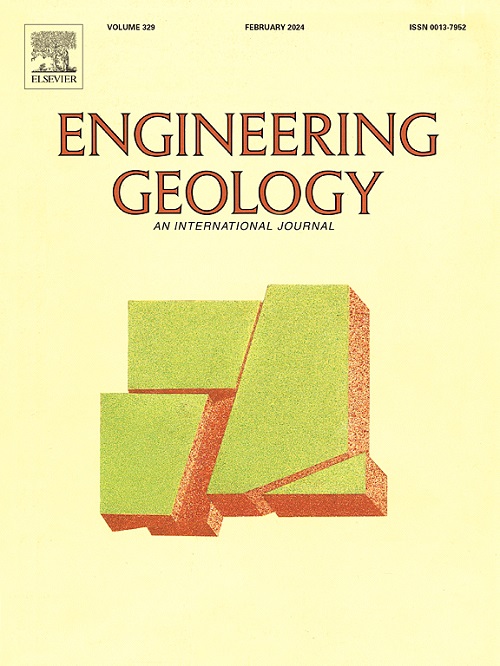尾矿坝滩涂的存在对决口流出和翻坝失败时的侵蚀的影响
IF 6.9
1区 工程技术
Q1 ENGINEERING, GEOLOGICAL
引用次数: 0
摘要
尽管尾矿坝在设计、施工、坝体材料和几何形状(尤其是坝体上游面)方面存在显著差异,但其溃坝分析目前在很大程度上依赖于针对挡水坝得出的关系和方法。传统的尾矿浆从坝顶沉积,通常会在蓄水池内形成低角度的上游滩(倾斜度为 1-2%)。在本文中,我们利用物理和数值建模分离了尾矿坝在翻坝时的滩面几何形状对溃坝特性的影响。通过 V 型缺口倾覆,5 个高 1 米、滩面高度为 0.5 至 0.9 米、滩面坡度为 5 % 的均质细砂坝发生了溃坝。实验室数据显示,存在一个滩高临界值,超过该临界值后,水库的几何形状会逐渐限制峰值排水量。在 XBeach 中进行的数值模拟在流出水文图中捕捉到了这种影响,物理模型和数值模型的峰值流出量之间的差异一般在 25% 以内。尾矿坝溃坝分析的另一个关键模型参数是溃坝时因侵蚀而损失的尾矿固体量。通过物理模型中心线切割的地面激光扫描高程剖面与 XBeach 模拟的比较表明,当出现尾矿式海滩时,XBeach 可以复制侵蚀的体积特征。这些研究结果表明,尾矿坝翻坝溃决的危险分析应考虑尾矿坝海滩几何形状对流出水文图的影响,并形成了越来越多的证据,支持使用 XBeach 模拟溃坝。本文章由计算机程序翻译,如有差异,请以英文原文为准。
Effect of the presence of a tailings dam beach on breach outflow and erosion during overtopping failure
Dam breach analyses for tailings dams currently rely heavily on relationships and methods derived for water retaining dams, despite significant differences in design, construction, dam materials, and geometry; particularly, the upstream face of the dam. Conventional tailings slurry deposition from the dam crest typically forms low angle upstream beaches (1–2 % inclination) within the impoundment. In this paper, we isolate the effect of tailings dam beach geometry at the time of overtopping on breach characteristics using physical and numerical modeling. Five 1 m high homogeneous fine sand dams with beach heights of 0.5 to 0.9 m and a beach slope of 5 % were brought to failure by v-notch overtopping. The laboratory data revealed that a threshold beach height existed above which the peak discharge was progressively limited by the geometry of the reservoir. Numerical simulations, performed in XBeach, captured this effect in the outflow hydrographs, with differences between physical and numerical model peak outflow generally within 25 %. Another key model parameter in tailings dam breach analysis is the volume of tailings solids lost through erosion during breach. Comparison of terrestrial laser scanning elevation profiles, cut through the centreline of the physical model, with XBeach simulations indicate XBeach can replicate the bulk characteristics of erosion when a tailings-style beach is present. These findings show that hazard analysis for overtopping failure in tailings dams should consider the effect of tailings dam beach geometry on the outflow hydrograph, and forms a growing case of evidence to support the use of XBeach for simulation of dam breach.
求助全文
通过发布文献求助,成功后即可免费获取论文全文。
去求助
来源期刊

Engineering Geology
地学-地球科学综合
CiteScore
13.70
自引率
12.20%
发文量
327
审稿时长
5.6 months
期刊介绍:
Engineering Geology, an international interdisciplinary journal, serves as a bridge between earth sciences and engineering, focusing on geological and geotechnical engineering. It welcomes studies with relevance to engineering, environmental concerns, and safety, catering to engineering geologists with backgrounds in geology or civil/mining engineering. Topics include applied geomorphology, structural geology, geophysics, geochemistry, environmental geology, hydrogeology, land use planning, natural hazards, remote sensing, soil and rock mechanics, and applied geotechnical engineering. The journal provides a platform for research at the intersection of geology and engineering disciplines.
 求助内容:
求助内容: 应助结果提醒方式:
应助结果提醒方式:


